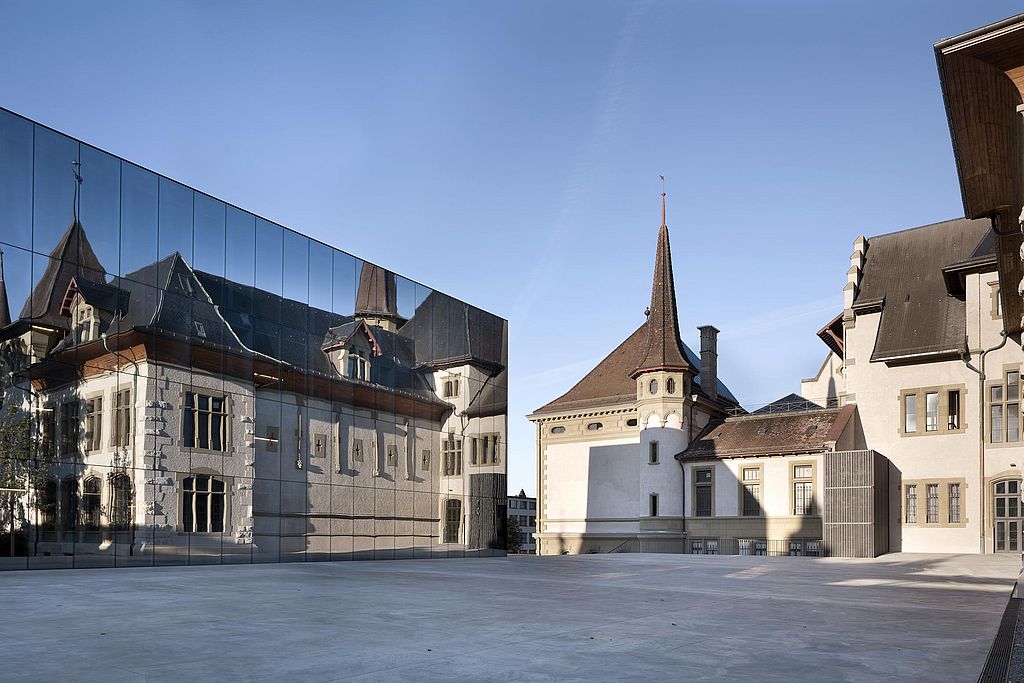FROM THE EARLY MIDDLE AGES TO THE ANCIEN RÉGIME
Taking up approximately 1200 m2 the exhibition gives an overview of the history of the city and republic of Bern using important exhibits. The objects documenting the period between about 400 and about 1700 are displayed throughout 16 rooms. Some 500 exhibits with many different provenances include paintings, sculptures, furniture, weapons, items of everyday use and textiles, all bearing witness to past living environments.
Immerse yourself in the history of Bern and follow it on a journey that led from a rural settlement at the time of its found- ing to the mightiest municipal republic north of the Alps.
GLORY AND DECLINE OF THE ANCIEN RÉGIME
The exhibition takes up approximately 330 m2 and focuses on 18th and 19th century Bern. Unique objects tell us about the golden age of the educated and gallant citizens of Bern. However, they also show the decline of the Ancien Régime and the struggle for a new constitution. Some 300 exhibits including written documents, musical instruments, porcelain figurines and costumes bring the era back to life.
Discover Bern‘s golden age and learn of the relationships between power, know- ledge, upheaval and awakening at the time of the Helvetic Revolution.
CAPTURED TREASURE – COURT ART IN BERN (1250–1520)
The exhibition, extending over some 360 m2, features works that arrived here as a result of Bern’s successful military campaigns and territorial expansion in the 15th and early 16th centuries.The top quality materials used in these items, their technical sophistication and their often unusual aesthetics set them apart from anything known or produced in Bern at that time.
Let yourself be dazzled by the magnificence of our star pieces, and plunge
into the luxurious world of late medieval princes.
FRAGILE TREASURE – CONSERVING COURT TEXTILES (2012– )
To have textiles permanently on display at a Museum is a great challenge. Before we bring our Caesar tapestries back into an exhibition for instance, it is essential to inspect and document their current condition. After that, measures to con- serve them will be decided on. For this purpose a temporary workshop, measur- ing about 190 m2, has been set up.
Look over the shoulders of our textile conservators as they work, and see just how 15th century tapestries are preserved for future generations.
BERN‘S SILVER TREASURE
Taking up some 30 m2 the exhibition presents approximately 90 gold and silver works of art dating from the 16th to 18th centuries. The goblets, figurative drinking vessels and testimonials from the Renaissance and Baroque periods offer an account of important events in the political, social and economic life of Bern.
Marvel at the splendour and magnificence of Bern‘s silver treasure and let yourself be enthralled by the imaginative and detailed craftsmanship.
BERN AND THE 20TH CENTURY
Taking up approximately 580 m2 the exhibition relates Bern‘s journey to modernity from 1900 to 2001 in the form of a time bar. Each year is represented by an event or pioneering feat, which makes the zeitgeist of that particular time more tangible. Some 200 original objects and numerous replicas give visitors an insight into a wide range of topics which include everything from politics to the economy, society, sports, technology, science, everyday life, and art and design.
Tell your children and grandchildren stories about the days of your wild youth and discover a creative and surprising side to Bern.
STONE AGE, CELTS AND ROMANS
Taking up approximately 360 m2 the exhibition uses archaeological finds to display 50,000 years of human history. 1,500 original finds offer an account of the Early and Late Stone Ages, the Bronze Age, the pile dwellers, the Iron Age, the Celts, the Romans and the Early Middle Ages.
Experience firsthand the development and transformation of the first humans in this region. Whether child or adult, you learn that there can be no future without a past.
TREASURES FROM THE TOMBS OF ANCIENT EGYPT
Taking up some 40 m2 the exhibition introduces the mortuary cult and concepts of the afterlife that prevailed in ancient Egypt. Approximately 110 objects from the period between 3000 and 30 BC outline the cultural history of the 30 dynasties of pharaohs.
Travel to the empire of the pharaohs and learn more about their mortuary rituals. Discover a culture whose pyramids, hieroglyphs and mummies still fascinate today.
ORIENTAL COLLECTION HENRI MOSER
Taking up approximately 330 m2 the exhibition offers information on Central Asia, Persia and the Ottoman Empire. The earliest of the 130 exhibits dates from the 4th century BC, the latest from the 20th century AD. Lacquer works, silverware, weapons, religious objects, water pipes, incense burners and scientific instruments paint a varied picture of the Orient.
Let yourself be transported to the fairytale world of The Thousand and One Nights and discover the diverse world of Islam.






